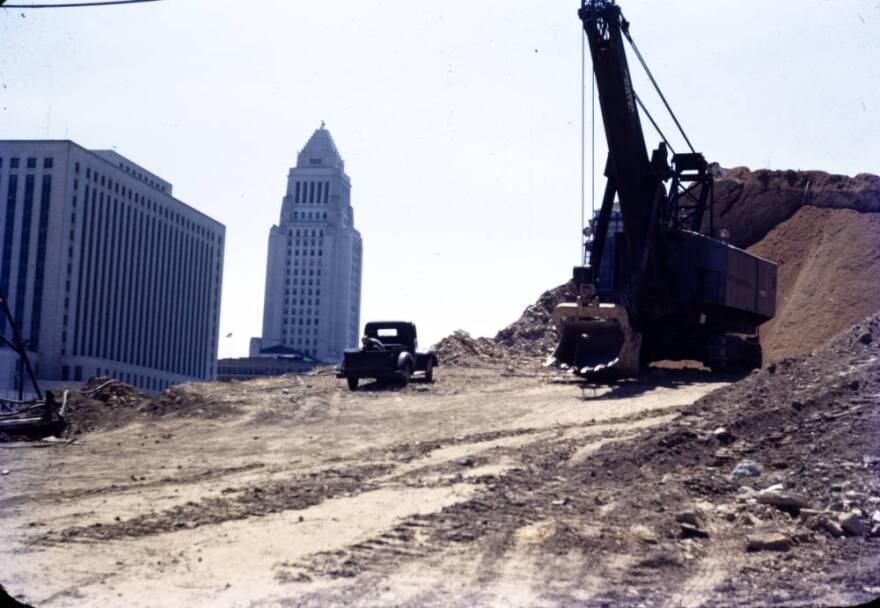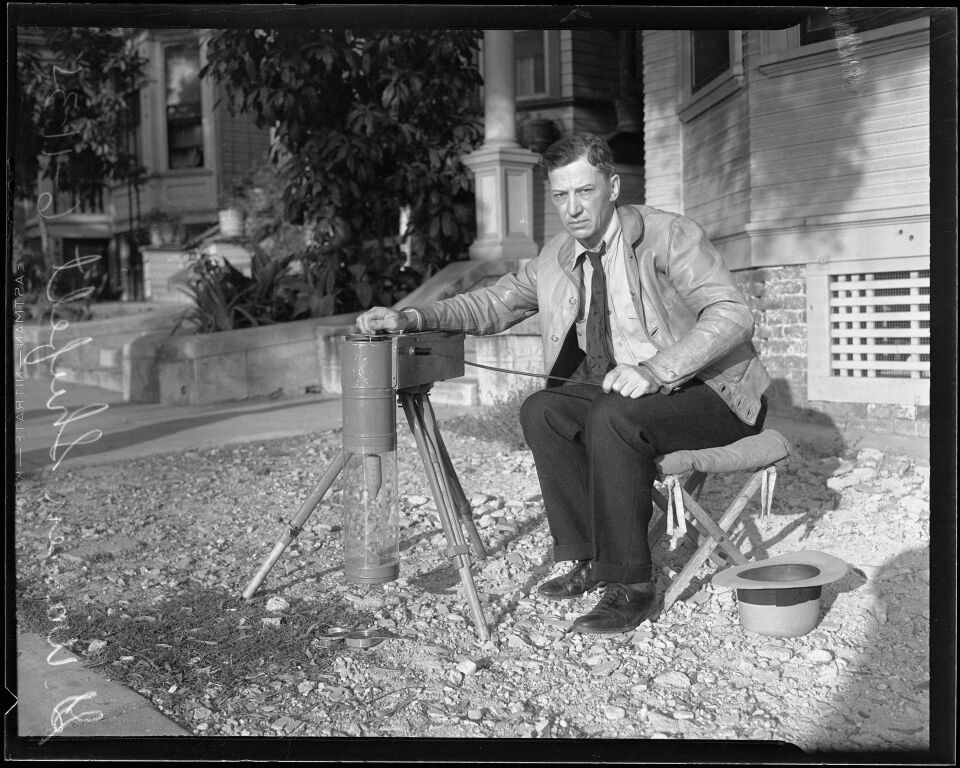Truth matters. Community matters. Your support makes both possible. LAist is one of the few places where news remains independent and free from political and corporate influence. Stand up for truth and for LAist. Make your tax-deductible donation now.
Was gold buried under LA 5,000 years ago? A legend that drove a saga

During the Great Depression, Los Angeles faced a widespread economic downturn. Local leaders were grappling with how to help Angelenos facing poverty while also having lower revenue.
Everyone was strapped for cash. That kind of desperation can lead to some questionable ideas — like hunting for hidden treasure. That’s what occurred when L.A. County was offered a strange but compelling proposition: Allow the digging up of parts of L.A. in hopes of finding millions in gold, and take a share of the bounty.
It sounds like something out of a movie — but it actually happened.
Downtown’s gold legend
The saga revolves around a man named George Warren Shufelt, a mining engineer who was fascinated with hunting for gold. He was by no means the only person trying to strike it rich in those days, but his methods were pretty unconventional.
In 1933, he and his crew, Rex McGreery and Ray Martin, believed a fortune lay under downtown, deep inside Fort Moore Hill behind the Hall of Justice. They claimed it was chock full of old Spanish doubloons and gold bullion, supposedly left behind by early settlers a hundred years prior.
How did they know this? Shufelt’s “doodlebug” — an electric radio gold-finding gadget he built — and his teammates’ ancient sheepskin map showed spots with riches. (Seriously, you could not make this up.)

The land was L.A. County property, so they somehow convinced the Board of Supervisors to let them dig. In February that year, they entered into a contract that exchanged digging permission for a split of the bounty: Half would go to the three of them and the other half to the government.
News reports breathlessly followed the developments with headlines like “Treasure hunt on hill to reach climax today.”
New ploys
Finding that gold was a moving target.
The crew dug shafts like gophers. In early March 1933, the machine showed there was a stash 28 feet down. But as they got closer to the end, with no gold in sight, Shufelt changed the plan.
Now, the search was for a tunnel leading to a long lost treasure cave on the map, roughly 9 feet down a different shaft. Changing direction didn’t help — no gold was found.
Later that month, after an earthquake, the search was halted as the county ordered their diggers to stay out of the shaft. But once it settled, he fought to get the contract renewed for 30 days.
This time, he argued a thorough survey of the hill showed a “labyrinth of tunnels” with at least 16 places where gold was buried or in vaults. But while the county approved it, the miners seemingly gave up on the dig just a few months later.
A last ditch effort
In November of that year, Shufelt came back with yet another elaborate tale.
He said Little Chief Green Leaf, a Native medicine man in Arizona, told him about a legend of buried gold under the Hall of Justice and the Central Library, which was left 5,000 years ago by a tribe of humans called the Lizard People, a more technologically advanced community than modern society.
It was supposed to be laid out to resemble a lizard, the community’s symbol of long life. The tail should’ve been below Fifth and Hope streets, with the city’s “key room” under South Broadway and Second Street. Gold tablets inside there were supposed to have the origins of the human race.
Shufelt said his gold-finding machine had taken X-ray pictures of these tablets, but he told the L.A. Times “the legendary story must remain speculative until unearthed by excavation.” This time, they wanted to dig 1,000 feet down.
If there was any truth to the riches, Shufelt never knew. The search was called off in February 1934 with the belief the gold must’ve been deeper than expected.
And that hotspot, Fort Moore Hill? That would later be cut down anyway to make way for the 101 Freeway.











